by Barlow Mann
Motivation is a critical element in the charitable giving process. What can you do to develop loyal and motivated donors?
Most people have a favorite restaurant they frequent time and time again. Similarly, many donors tend to give to the same charities year after year. What creates this type of loyalty? Let’s take a closer look at our restaurant analogy.
You likely go to your favorite local restaurant because it is close to your home, you enjoy the familiarity of the staff and surroundings and you know it will provide quality food and service. In other words, the restaurant is near to your home, dear to your heart and clearly offers an exceptional dining experience. Being near, dear and clear are key reasons why you keep coming back.
We believe that for maximum fundraising success, nonprofit organizations and institutions should also strive to be “near,” “dear” and “clear” to their donors. Here are some strategies to help achieve that result.
So far and yet so close
Many charitable organizations, especially national or international ones, have missions and donors that span the country or the globe. To stay as engaged with their donors as possible, many establish local chapters or regional offices. If that option isn’t possible, however, nonprofits can close the geographical gap in other ways. Ongoing communications such as newsletter updates, phone calls, digital communication and personal visits can all help bring your organization closer to your donors.
It is not unusual for colleges and universities to sponsor alumni dinners in various cities, for example. Other types of organizations reach out using television commercials and other visual media. Showing images people can relate to makes the organization seem “near,” even if you are geographically far away. The internet and social media also provide information and personal contact points over long distances through organizational websites, Facebook pages, Twitter, YouTube, Instagram and others. It’s never been easier and faster to cross the miles with your message.
Communicating with donors and keeping your organization “near” requires extra time and resources, and yet such efforts are imperative. With a proper strategy for keeping your donors informed, you will not be “out of sight, out of mind,” and donors will feel close to you no matter what your address happens to be.
Are you dear to them?
What we hold dear didn’t assume that status overnight. It took time and serious interest for emotional attachment to develop. Likewise, making a major gift typically occurs only after donors have spent a long time contributing smaller gifts, building memories with development staff and identifying with a nonprofit’s mission. Since time is involved, “dearness” may be the most challenging of the three goals to achieve.
Remember that a donor’s decision to make a bequest or a similar gift involves a significant emotional investment. Such a gift essentially elevates the nonprofit to the status of a close friend or family member. We have observed many types of nonprofits successfully form these deep ties with their donors.
For example, alumni donors often feel their college years were among the best of their lives, and their gifts arise from that sense of nostalgia. To build on that nostalgia, many colleges and universities feature testimonials from current students at donor events or in social and print media to show donors how their gifts can have a lasting impact on future generations.
Religious-based organizations and institutions are dear to their supporters because of deeply felt spiritual motivations. These feelings can be based on personal experiences or a desire to further the mission of the organization as it reaches out to help others. Charitable activity in our society, as elsewhere in the world, is rooted, to a large extent, in religious teachings, and it is important to understand and respect this motivation.
Cultural institutions can also become “dear” to their donors. A development officer once told the story of a woman who visited a zoo every day, when the weather permitted, with an attendant who helped her traverse the grounds in her wheelchair. When asked why she came each day, she stated that her son had been killed in an accident some years before and her best memories were the times she spent with him as a child at the zoo. A short time later she passed away and left a significant sum to the zoo for an endowment in memory of her son.
Donors who support healthcare causes/entities were often patients themselves or had a family member who was treated at a particular facility or benefited from its research, and they want to do all they can to help a cause they believe saved their lives or those of loved ones. In these cases, “dearness” also comes from a deep emotional attachment to an organization and its mission.
Clear mission
Would you feel comfortable giving to an organization if you weren’t quite sure what it did, whom it served, the nature of its mission and the results being achieved? Probably not. No matter your mission, you must make sure your funding needs are clear and understood by your donors and potential donors.
Every charitable organization exists because someone supported it and believed in its mission. Just because your organization’s mission is specialized or unique doesn’t mean that donors who are willing and able to support it aren’t there. State your case clearly, whether your organization is obscure or well known, so that donors know what their gifts will be supporting.
Without a clear, understandable mission, an organization may find itself floundering due to confused donors or, even worse, lack of donors. Making your message clear can encourage donors to support your mission because it aligns with their interests.
In light of the divisive political climate, possible tax reform and other factors, many Americans are seeking to affirm their core values by giving more to charitable interests that support those values. Now may be an especially opportune time to return your focus to the basics of fund development.
Make sure you are as near to your support base as possible. Nurture and respect the relationships that keep your institution dear to donors. And send regular messages that make your mission clear to those who would choose to direct their monetary resources through you for the benefit of others.
 Learn more about the foundations of gift planning by attending our “An Introduction to Planned Giving” Seminar.” Click here for the dates and locations of all our upcoming events.
Learn more about the foundations of gift planning by attending our “An Introduction to Planned Giving” Seminar.” Click here for the dates and locations of all our upcoming events.
Barlow Mann is Chief Operating Officer of Sharpe Group.



